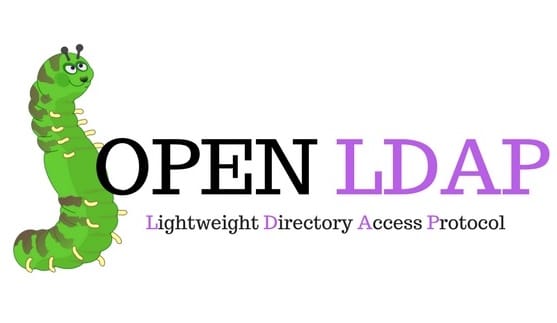How To Install OpenLDAP on Debian 12

In this tutorial, we will show you how to install OpenLDAP on Debian 12. In the intricate landscape of modern IT infrastructure, efficient management of user data and authentication is crucial. OpenLDAP, an open-source implementation of the Lightweight Directory Access Protocol, offers a robust solution for centralizing user information.
This article assumes you have at least basic knowledge of Linux, know how to use the shell, and most importantly, you host your site on your own VPS. The installation is quite simple and assumes you are running in the root account, if not you may need to add ‘sudo‘ to the commands to get root privileges. I will show you the step-by-step installation of OpenLDAP on a Debian 12 (Bookworm).
Prerequisites
- A server running one of the following operating systems: Debian 12 (Bookworm).
- It’s recommended that you use a fresh OS install to prevent any potential issues.
- SSH access to the server (or just open Terminal if you’re on a desktop).
- An active internet connection. You’ll need an internet connection to download the necessary packages and dependencies for OpenLDAP.
- A
non-root sudo useror access to theroot user. We recommend acting as anon-root sudo user, however, as you can harm your system if you’re not careful when acting as the root.
Install OpenLDAP on Debian 12 (Bookworm)
Step 1. Before installing OpenLDAP, it is recommended to update the system to ensure that all packages are up to date. You can do this by running the following command in the terminal:
sudo apt update sudo apt install curl gnupg apt-transport-https
This command will refresh the repository, allowing you to install the latest versions of software packages.
Step 2. Installing OpenLDAP on Debian 12.
Install the OpenLDAP server and related utilities using the following command:
sudo apt install slapd ldap-utils
During installation, you’ll be prompted to set the LDAP administrator password.
Confirm the successful installation of OpenLDAP by checking the service status:
sudo systemctl status slapd
Step 3. Configuring OpenLDAP.
Now that OpenLDAP is installed, let’s proceed with its configuration:
sudo nano /etc/ldap/ldap.conf
Modify the lines as needed:
BASE dc=example,dc=com URI ldap://localhost
Use the slappasswd utility to create a hashed password for the LDAP administrator:
slappasswd
Copy the generated hash and update the admin’s password in the configuration file:
sudo nano /etc/ldap/slapd.d/cn=config/olcDatabase={0}config.ldif
Step 4. Network Configuration and Port Settings.
Ensure that OpenLDAP is reachable over the network. Adjust the firewall rules to permit LDAP traffic:
sudo ufw allow ldap
Step 5. Creating LDAP Directory Structure.
Prepare LDIF files to define your directory’s structure. For instance, create a file named base.ldif:
dn: dc=example,dc=com objectClass: top objectClass: dcObject objectClass: organization o: Example Organization dc: example dn: ou=people,dc=example,dc=com objectClass: organizationalUnit ou: people dn: ou=groups,dc=example,dc=com objectClass: organizationalUnit ou: groups
Add the entries from your LDIF file to the directory:
ldapadd -x -D "cn=admin,dc=example,dc=com" -W -f base.ldif
Step 5. Populating the Directory.
Extend your directory by adding entries using LDIF files. For instance, create an user.ldif file:
dn: uid=john,ou=people,dc=example,dc=com
objectClass: top
objectClass: person
objectClass: organizationalPerson
objectClass: inetOrgPerson
cn: Meilana Maria
sn: Joe
givenName: Meilana
uid: Meilana
mail: Meilana@example.com
userPassword: {SSHA}lQfb6GEQzrqxzJLR4Wx2t8qefjSny5hE
Add the entry:
ldapadd -x -D "cn=admin,dc=example,dc=com" -W -f user.ldif
Step 6. Implementing Access Control.
Access Control Lists define who can access which parts of your directory. Modify the ACLs in the olcDatabase={2}hdb.ldif file. For instance, to grant read-only access to the “people” OU, modify the ACL section like this:
olcAccess: {2}to dn.subtree="ou=people,dc=example,dc=com" by users read
Step 7. Enabling TLS/SSL Encryption.
Generate self-signed SSL certificates for securing communication:
sudo openssl req -new -x509 -nodes -out /etc/ldap/ssl/cert.pem -keyout /etc/ldap/ssl/key.pem -days 365
Edit the slapd.conf file to enable TLS/SSL:
sudo nano /etc/ldap/slapd.conf
Add the following lines:
TLSCACertificateFile /etc/ldap/ssl/cert.pem TLSCertificateFile /etc/ldap/ssl/cert.pem TLSCertificateKeyFile /etc/ldap/ssl/key.pem
Step 8. Integrating OpenLDAP with Applications.
To enable LDAP-based SSH authentication, update the /etc/ssh/sshd_config file:
sudo nano /etc/ssh/sshd_config
Add the line:
AuthorizedKeysCommand /usr/bin/ssh-ldap-helper
Step 9. Troubleshooting and Common Issues.
- Analyzing Logs for Errors
Check the logs using the journalctl command:
sudo journalctl -u slapd
- Handling Connection Issues
Ensure the LDAP service is running and reachable. Check firewall settings if needed.
Congratulations! You have successfully installed OpenLDAP. Thanks for using this tutorial for installing the latest version of OpenLDAP on Debian 12 Bookworm. For additional help or useful information, we recommend you check the official OpenLDAP website.